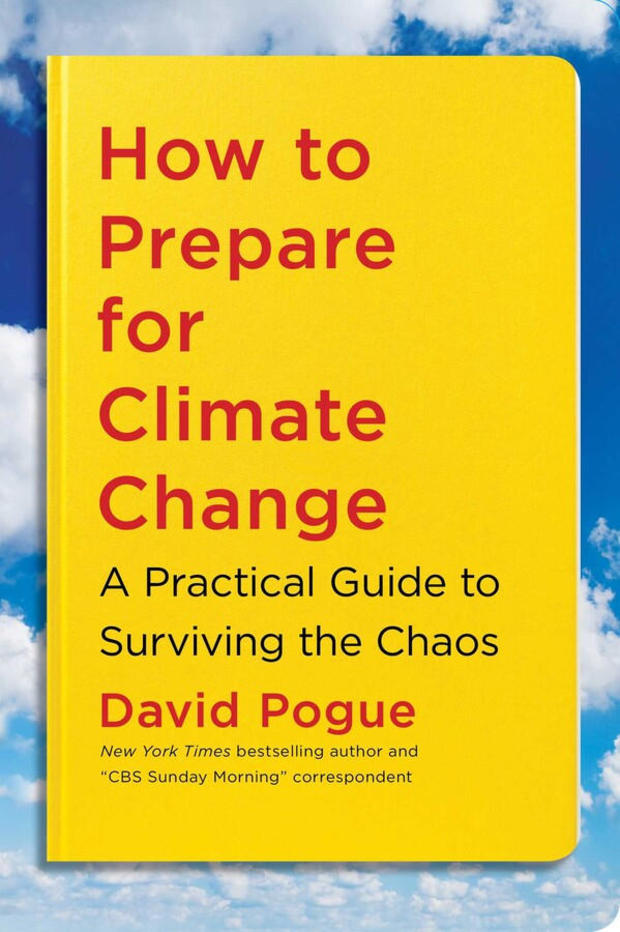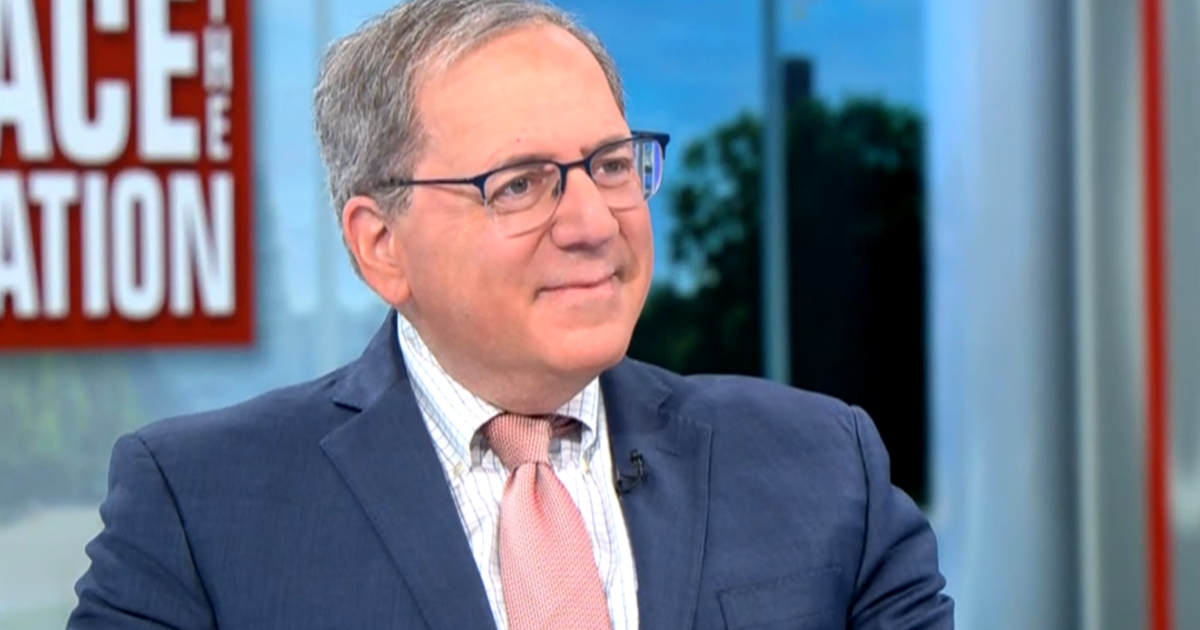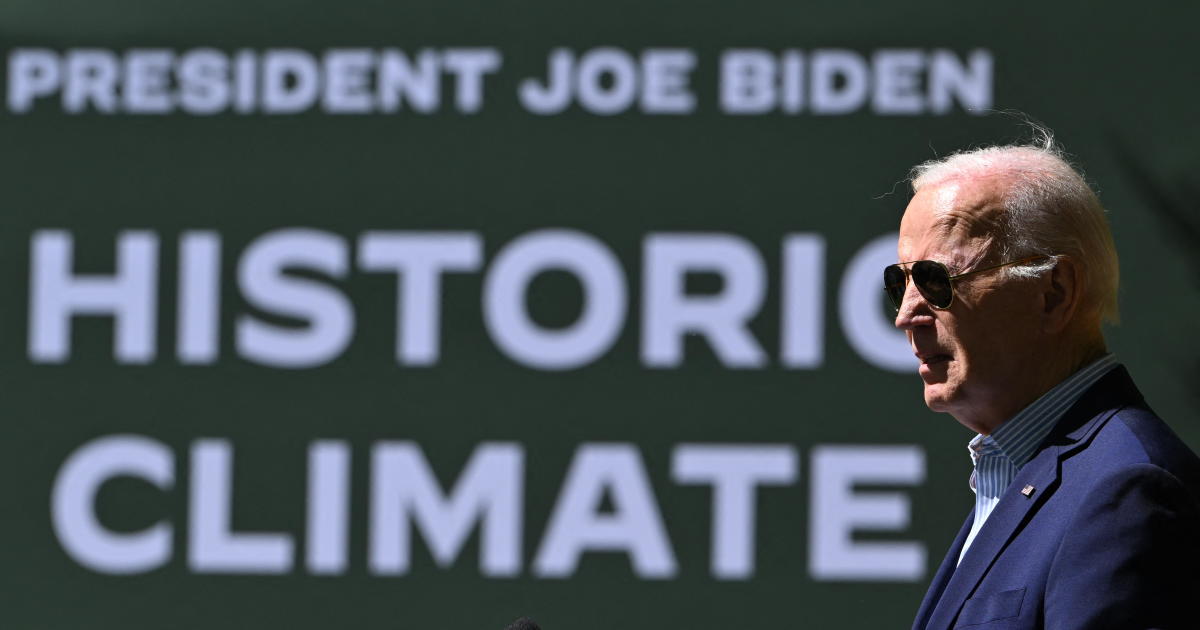Book excerpt: "How to Prepare for Climate Change" by David Pogue
In his new book, "How to Prepare for Climate Change: A Practical Guide to Surviving the Chaos" (Simon & Schuster), science and technology writer and "CBS Sunday Morning" correspondent David Pogue offers advice on how individuals can adapt to a quickly-changing planet.
Maybe you're liberal, maybe you're conservative. Maybe you think the climate crisis is man-made, maybe you think it's just natural cycles. Maybe you think the whole thing is a Chinese hoax.
Guess what? It doesn't matter. The world is getting hotter, natural systems are going haywire, and you should begin to prepare.
Even if we stopped burning fossil fuels and chopping down forests tomorrow, we wouldn't stop climate change. We wouldn't stop land ice from melting, millions of people from enduring forced migration, thousands of animal species from going extinct, and thousands of people from dying every year from insane-weather events that are hitting steadily more frequently.
That's because 93% of our new, improved heat has gone into the oceans, which take decades or centuries to heat up or cool down. As a result, the planet's climate would take a lifetime to reset.
In short, the time for bickering about who or what is at fault is long gone.
The Intergovernmental Panel on Climate Change (IPCC) is the world's most authoritative climate assembly: 1,300 scientists from all over the world. Every few years, they release a sort of "How Screwed Are We?" report card. In the latest report, the IPCC projects that the Earth's average temperature will rise between 2.5°F and 10°F in the next 100 years.
And that's a very conservative estimate. After all, it had to earn a consensus of government bureaucrats.
It's time to accept the new realities – of extreme weather, sure, but also what that weather will mean for our everyday lives: a lot of conflict, cost, and chaos.
In 2007, The New York Times interviewed John Holdren, Barack Obama's senior science advisor. What he said has become famous in climate circles:
"We basically have three choices: mitigation, adaptation, and suffering. We're going to do some of each. The question is what the mix is going to be."
Once you start reading about climate science, you encounter these terms a lot.
- Mitigation means trying to stop climate change: Replace fossil fuels with clean power. Eat less beef. Fly less. Grow trees instead of clear-cutting them. Adopt smarter farming and industrial techniques. Drive less. Have fewer children.
- Adaptation means coping with climate change: Build seawalls. Raise houses. Move farmland to cooler regions. Plant heat-tolerant trees. Buy out homeowners in flood-prone areas.
- Suffering. Well, you'll be reading plenty about that.
There's no longer any intra-expert arguing over mitigation versus adaptation; it's too late for that. We have to do both, as hard and as fast as possible.
Reams have been written about what you, as an individual, can do to pursue mitigation – and you should. You should mitigate the hell out of your home, your family, your town, your employer, your voting record.
But so far, the only people doing much adaptation are governments, corporations, and institutions.
Where does that leave you, the individual? You can't build a seawall this weekend. You can't persuade farmers to move north. You can't develop drought-proof seeds.
That's where this book comes in. It's a practical guide to adaptation steps that you can take, as one person – for your own benefit, your family's, and your community's. It's about where to live, how to invest, what to eat, how to build, what insurance you need, how to talk to your kids.
It's also about how to prepare for the extremes that are coming soon to weather near you: floods, fires, heat waves, droughts, superstorms, water shortages, food shortages, power failures, and social disruption.
The Adaptation Era
All over the world, adaptation is underway. Starbucks is developing new, climate-resilient coffee beans. Miami developers are siting their projects farther from the shore. Monsanto is investing millions to create genetically modified, climate-resistant crops. Every major insurance company has hired climatologists and statisticians to incorporate extreme weather into their mathematical models.
Governments around the world are taking adaptation steps, too, by building some of the biggest public-works projects ever conceived, in hopes of protecting the land from the rising seas and flooding. New Orleans will spend the next 50 years constructing the most ambitious (and expensive) coastal-protection system in history. Similar projects are underway in New York City (a 10-mile system of movable walls and raised parks), London (a 16-mile-long "Super Sewer," 24 feet across), Tokyo (250-foot-deep underground cisterns), Jakarta, Indonesia (an 80-foot-tall seawall, 25 miles long – the biggest ever made), and China (permeable pavement, artificial ponds and wetlands, rain gardens, and underground storage tanks in over 600 cities).
Venice, the city whose "streets" are canals, now floods routinely; it's building a series of 78 massive, bright yellow, mobile sea walls, ten tons per slab, that can be raised during storms to protect the city. The government of the Netherlands, a low-lying country, spends $1.35 billion a year on flood protection. And in the United States, FEMA (the Federal Emergency Management Agency) has bought 43,000 homes in neighborhoods that repeatedly flood – then demolished them for good.
Plenty of institutions intend to get ahead through adaptation, too. Oil companies are preparing to exploit melting arctic sea ice to drill for more petroleum. The melting ice sheets in Greenland are unlocking vast deposits of uranium, gold, and rare-earth metals; over 100 new mines are in development. And as usable farmland becomes increasingly valuable, "the Chinese are running around right now buying up every shred of decent arable land in the world," says Nick Nuttall, former communications director for the UN Framework Convention on Climate Change.
Now, you don't hear much about individuals preparing for a new climate era, but that's only because they don't make headlines.
Some of their adaptations are small. In Phoenix, Arizona, where it can get over 120°F, people have learned to keep oven mitts in the car. According to resident Sadie Lankford, "The steering wheel and any metal you have to touch on your car will burn you."
Other adaptation steps are somewhat bigger – such as moving to safer cities. Sometimes, people are pushed out by extreme-weather disasters, like the wildfire that drove Bob and Linda Oslin out of Paradise, California. They've decided not to return.
Others are moving preemptively, like 55-year-old Karen Colton and her wife, who are moving from Florida to Asheville, North Carolina. They're tired of stressing about the next big hurricane.
And some people, contemplating a future of weather extremes, shortages of food and water, and more disease, are choosing not to have children. "It would be bringing a life into a future that does seem ever more desolate," 23-year-old Hannah Scott told the Guardian.
The planet we occupy is changing fast, and that's new information. It's affecting how people are making decisions about their lives: sometimes because they have a choice, and sometimes because they don't.
In short, it's time to prepare.
From "How to Prepare for Climate Change" by David Pogue. Reprinted by arrangement with Simon & Schuster. Copyright © David Pogue, 2021.
For more info:
- "How to Prepare for Climate Change: A Practical Guide to Surviving the Chaos" by David Pogue (Simon & Schuster), in Trade Paperback, eBook and Audio formats, available via Amazon and Indiebound
- davidpogue.com




